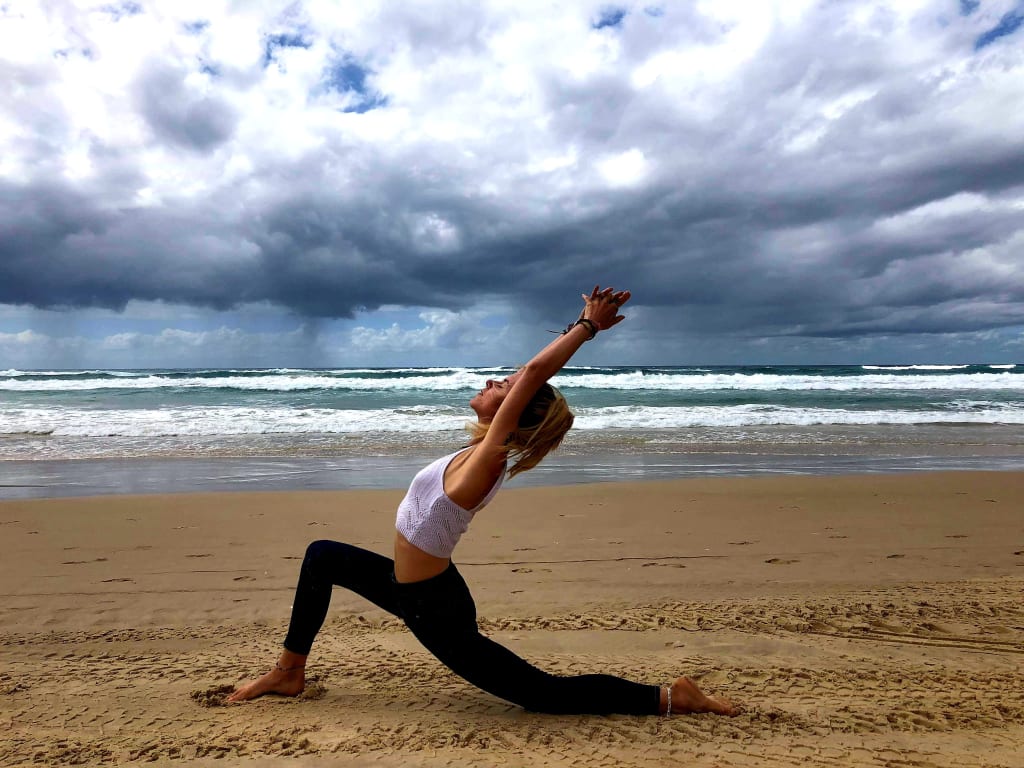In Concrete Terms, What Does It Mean to Do Yoga?
Apply the practice to your daily life.

"Let us bow before the noblest sages, Patanjali, who presented yoga for the serenity of the mind, grammar for clarity of words and medicine for keeping the body clean" B.K.S Iyengar
The word "yoga" comes from Sanskrit, the ancient Hindu language. This word means "union." It's up to you to interpret it as you wish. I like to interpret it as a union with life, a union with my inner self.
Yoga is not just a sport you do to have abs and know how to do the big gap. Although it helps, it's true.
During my trip to India, I discovered the full depth of this practice. Above all, I understood that the physical aspect of the practice is only a tiny part of what "doing yoga" implies.
Yoga is divided into eight aspects, 8 limbs of yoga, "ashtanga yoga."
It is said that the first aspect must be the first to be respected in order to work on the second, then the third, etc., until reaching this state of "awakening" of consciousness.
The eight pillars of yoga:
- Yamas: universal moral values
- Niyamas: self-purification through discipline
- Asanas: postures
- Pranayama: energy control through breathing
- Pratyahara: control of the senses
- Dharana: concentration
- Dhyana: meditation/concentration
- Samadhi: supreme state of consciousness
Iyengar describes them in his book Light on Yoga very accurately:
"Yama and Niyama rule the passions and emotions of the yogi keep him in harmony with his fellow men. The asana maintains the strength and health of the body and its harmony with the cosmos. Finally, the yogi frees himself from physical impressions. He triumphs over his body and makes it the worthy vehicle of the soul. The first three steps are the external aspects of the practice. In the next two stages, pranayama and pratyahara, the disciple learns to control his breathing in this way to control his mind. These two aspects of yoga are the inner aspects of research. Dharana, dhyana, and samadhi lead the yogi into the folds of his soul. The yogi looks inside himself. These last three steps were the search for the soul."
All these aspects I have tested in different ways more or less intensely at each moment of my life. I think yoga is practiced on a daily basis but it does not mean "daily physical practice," not that it includes all aspects.
There are times when I meditate for an hour a day and then practice for two or three hours a day.
There are other times when I just need to breathe better.
There are times when I do nothing. I only contemplate the present.
There are times like these when I travel when I don't have a fixed place to practice when I have another full-time job that is not in yoga.
There are times when I am an addict and I practice several hours a day.
There are times when I find that all these practices are too rigid.
There are even times when I'm lazy and I think it's cool to drink wine and watch the mysteries of love on TV, too.
At the moment, I am much less in my yoga practice. I try to practice one hour a day by going to take a class at 6 AM before my long days and I try to arrive early to meditate. I try to do the best I can to keep a practice despite the daily routine.
What yoga has also taught me is how to listen to oneself and how to adapt. Life is constantly changing. We don't know what tomorrow will be made of or what we will need to feel at peace.
There are times when you meditate for an hour on the attic and you will still feel irritated during the day. There are times when we will not practice at all and we will feel extremely well.
The important thing is to recognize that nothing is taken for granted and that there is always something to work on and learn.
What I try to keep daily are the values of yoga. The yamas. I feel that on days when I fully respect these values, I feel much more aligned and at peace.
Yamas/Universal Values:
- Ahimsa: the practice of non-violence, both in actions and in words and thoughts.
- Satya: practicing the truth with others and yourself
- Asteya: the practice of not stealing/not seizing other people's possessions
- Brahmacharya: control of self, senses, sexuality
- Aparigraha: non-attachment to material things but also to situations (good or bad)
Becoming a vegan two years ago was my first resolution in my yoga journey. I started by cutting all violence from my daily life and this radically changed the way I meditated. I immediately felt much more connected to my values. I was able to meditate more intensely and for a long time. And especially since then I have enjoyed eating and cooking a lot because I also think about everything that my dish involves and all the people and nature behind it.
I don't encourage anyone to become vegan to do yoga aha. For me, practicing non-violence meant becoming vegan but maybe for you, it will be different!
In order to record my progress and the points I need to work on, I am used to writing daily in my journal. In the evening, I remember the events of the day and I count the number of times I have not respected the different yamas. I often find that I respect them much more when I have meditated and practiced that very morning!
And you, how do you practice yoga?






Comments
There are no comments for this story
Be the first to respond and start the conversation.